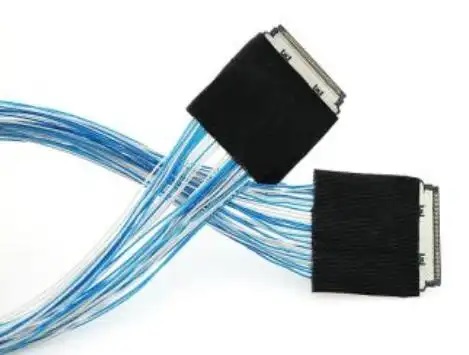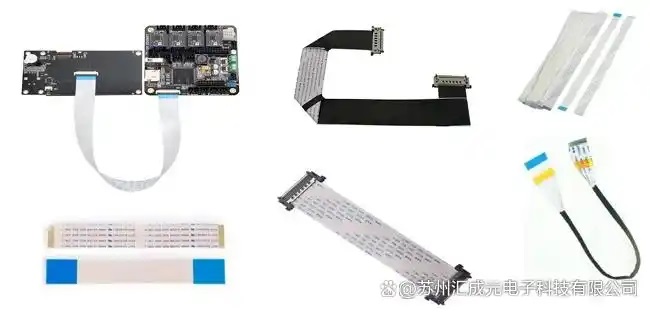In the fields of consumer electronics, medical equipment, automotive electronics, and industrial control, the choice of internal wiring materials for products directly affects the performance and reliability of the entire machine. With devices developing towards being thinner, faster, and more integrated, the selection between the three commonly used wire materials—Coax, FPC, and FFC—has become particularly important. This article will systematically analyze ultra-fine coaxial cables, FPC wires, and FFC wires from three dimensions: structural characteristics, performance differences, and typical applications, helping you make the correct selection quickly in actual projects.

What is ultra-fine coaxial cable, FPC line, and FFC line?
• Micro coaxial cable
Extremely thin coaxial cable structures are similar to traditional coaxial cables but with smaller dimensions, consisting of an inner conductor, insulating layer, shielding layer, and outer sheath. With good shielding effects and anti-interference capabilities, it can achieve high-speed and stable transmission in limited spaces, making it an ideal solution for high-density applications such as smartphone camera modules, medical endoscopes, and automotive display modules.
• FPC (Flexible Printed Circuit) Flexible Circuit Board
FPC is a flexible printed circuit formed by etching copper foil on a flexible material, which is lightweight and highly flexible, allowing free design of shape according to the mechanical structure. It can also directly support electronic components and is commonly used in flexible wiring applications such as internal wiring in mobile phones, notebook hinges, wearable devices, and vehicle-mounted modules.
• FFC (Flexible Flat Cable) Flexible Flat Cable
FFC is a cost-effective ribbon cable consisting of multiple parallel flat conductors with insulating layers. It has a simple structure, easy installation, and is widely used in connection tasks with fixed structures and lower speed requirements, such as televisions, printers, household appliances, etc.

Where do their performance and characteristics differ?
Extremely fine coaxial cable (Micro Coax)
High-speed performance strong, up to Gbps level
Excellent shielding structure, stable against interference
• Suitable for complex routing, good flexibility
The most suitable for high-frequency, high-speed and space-saving environments
FPC wire
Lightweight and flexible, can be bent repeatedly
Integrated electronic components (resistors, capacitors, chips, etc.)
Suitable for medium and low-speed signals
It is a conventional choice for high integration electronic devices.
FFC line
Simple structure, low cost
Clear wiring, easy for processing and installation
Interference resistance and high-speed performance are relatively weak.
Suitable for fixed structure, low-speed transmission scenarios

How to choose in different application scenarios?
High frequency, high speed, strong anti-interference, and extremely small space
Camera module, endoscope, drone transmission
Select: Extra Fine Coaxial Cable
2. Thin, flexible, bendable multiple times, medium to low speed transmission
• Scene: Mobile motherboard ribbon, wearable devices, vehicle-mounted modules
Select: FPC line
Fixed structure, low rate requirements, cost-sensitive
Printer, home appliance, display device internal connections
Select: FFC line

Choosing the appropriate internal wiring, can not only enhance product performance, but also significantly reduce the overall BOM cost and maintenance risk.
• When the core requirement of the project is high speed and anti-interference, extremely thin coaxial cables are irreplaceable.
If pursuing thinness, flexibility, and bendability, FPC has more advantages.
For cost-sensitive and structurally simple products, FFC is the most economical solution.
Understanding their structural differences and application boundaries will help you complete product design more efficiently, ensuring the optimal balance between performance, cost, and reliability.
We have long been focused on the design and customization of high-speed signal cable harnesses and extremely thin coaxial cable harnesses, committed to providing stable and reliable high-speed interconnect solutions. If you have any related needs or would like to learn more, please contact: Manager Zhang.
18913228573 (WeChat same number).



